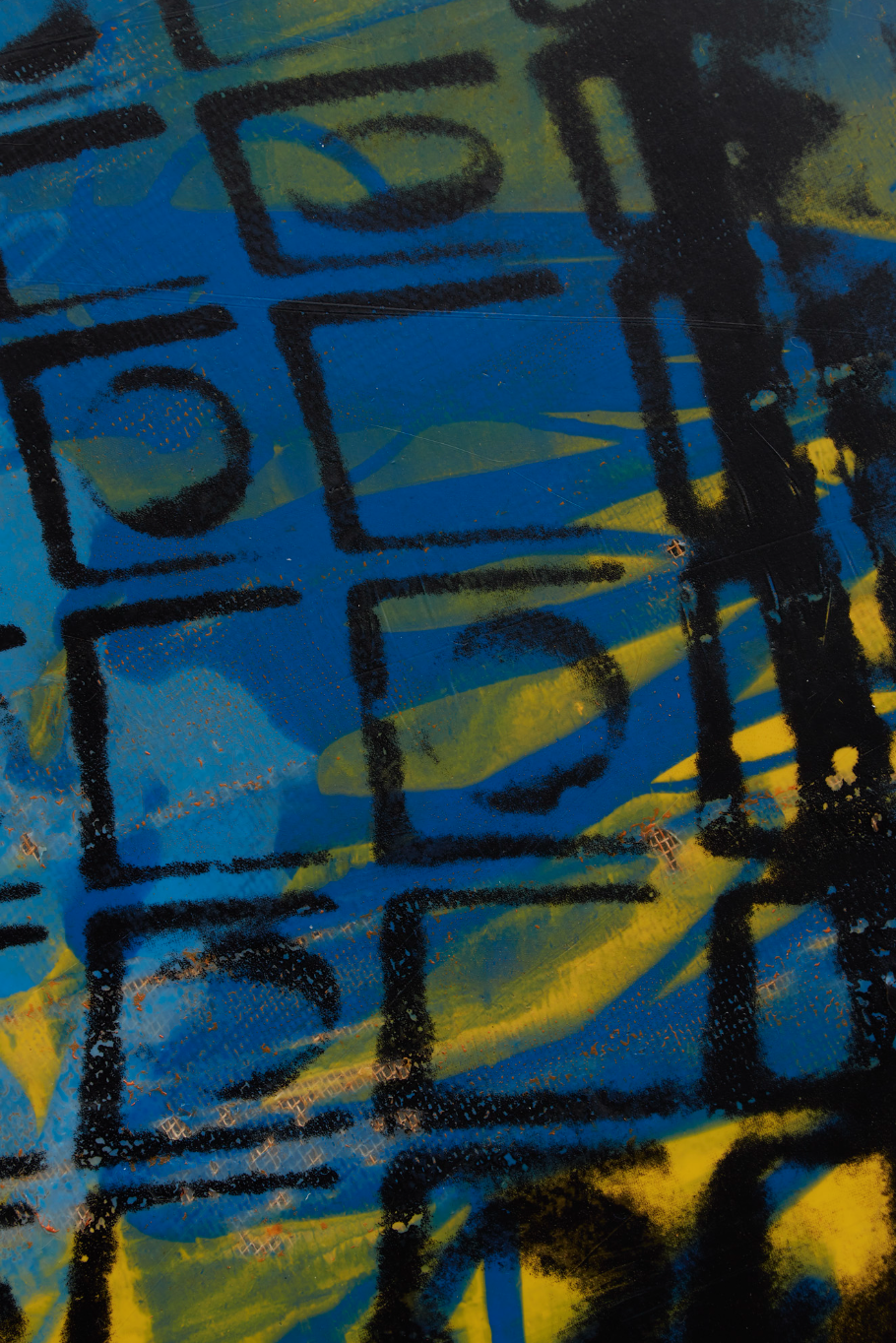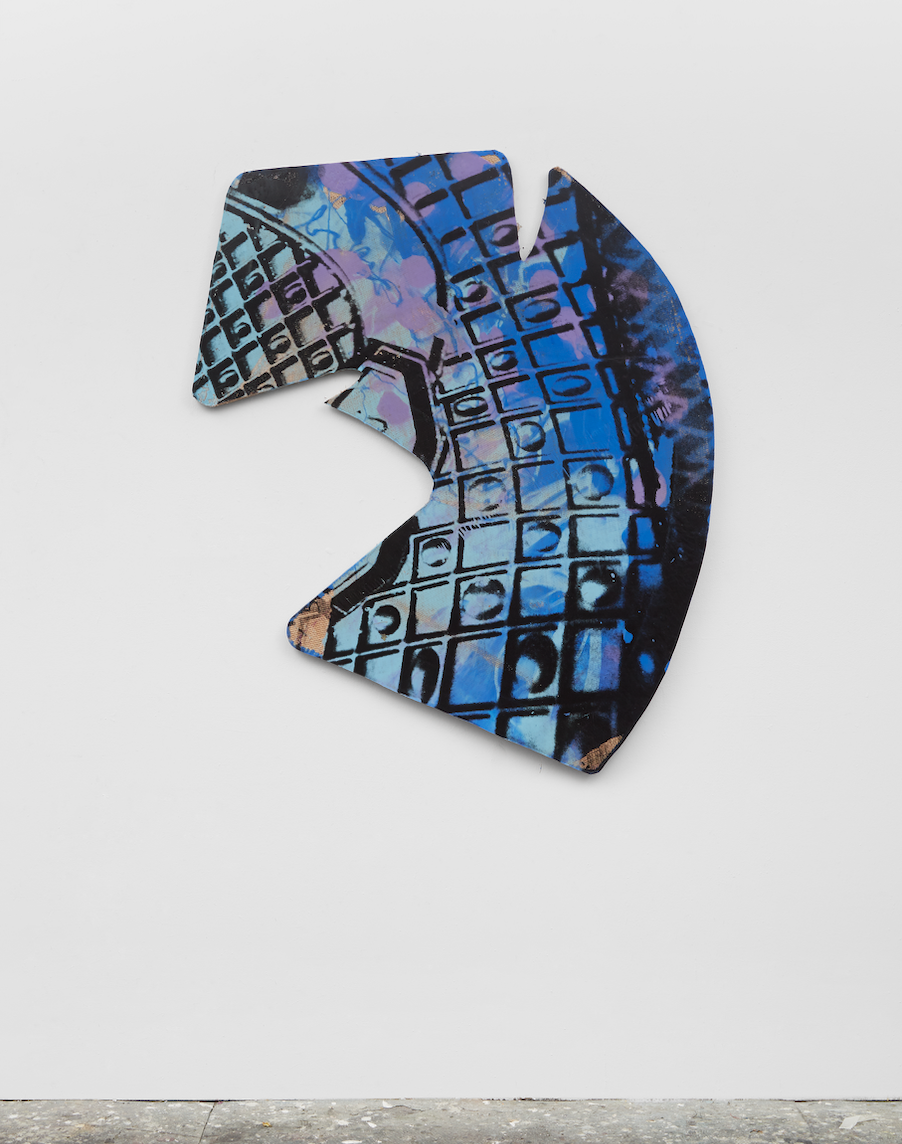Psycho Topography
Psycho Topography. The exhibition consists of 12 new paintings in which silkscreens are applied to poured rubber “canvases.” The body of work springs from O’Connell’s longstanding exploration of the way design influences human psychology and his new interest in design as evidence in crime narratives. Playing in the intersection of fact and fiction, O’Connell invents a form of Pop abstraction that pits Andy Warhol against Ellsworth Kelly while commenting on human rights and criminal justice.
O’Connell’s process is similar to molding the sole of a shoe, and also connects to the forensic practice of lifting footprints and information from the floor of a crime scene. The canvases take their shape from a single tread on the sole of a military boot. O’Connell appropriates this segment of pattern, massively scales it up, and cuts it out of plywood. He then stretches a coarse woven fabric called Hessian over the plywood. Working on the floor, he pours a mixture of liquid rubber and oil paint onto a plastic sheet. While the rubber cures, he places the shaped canvases face down onto the liquid composition until they bind together. His palette is drawn from natural alerts, such as the green and red shades of poisonous frogs used on Foxhound I, 2017. The colours also possess the flamboyant energy of athletic wear, alluding to the world of fashion and design. Finally, a zoomed out tread pattern is silkscreened in black or blue on top of the cured rubber surface.
The works in “Psycho Topography” are nicknamed “Souls,” a pun on soles, because they stand in metonymically for their wearers. They complicate our sense of perspective in a number of ways. Traditional elevation views of the landscape are inverted through the examination of shoe treads, unearthing a series of what one might designate “reverse aerial views.” Layering diverse scales on top of one another, these sculptural paintings put a spin on the inner experience of human encounters with the environment. Grounded in more ways than one, O’Connell’s “Souls” enrich the art history of abstraction by drawing on both high and popular culture, questioning the true and fake, and merging the physical and psychological.














